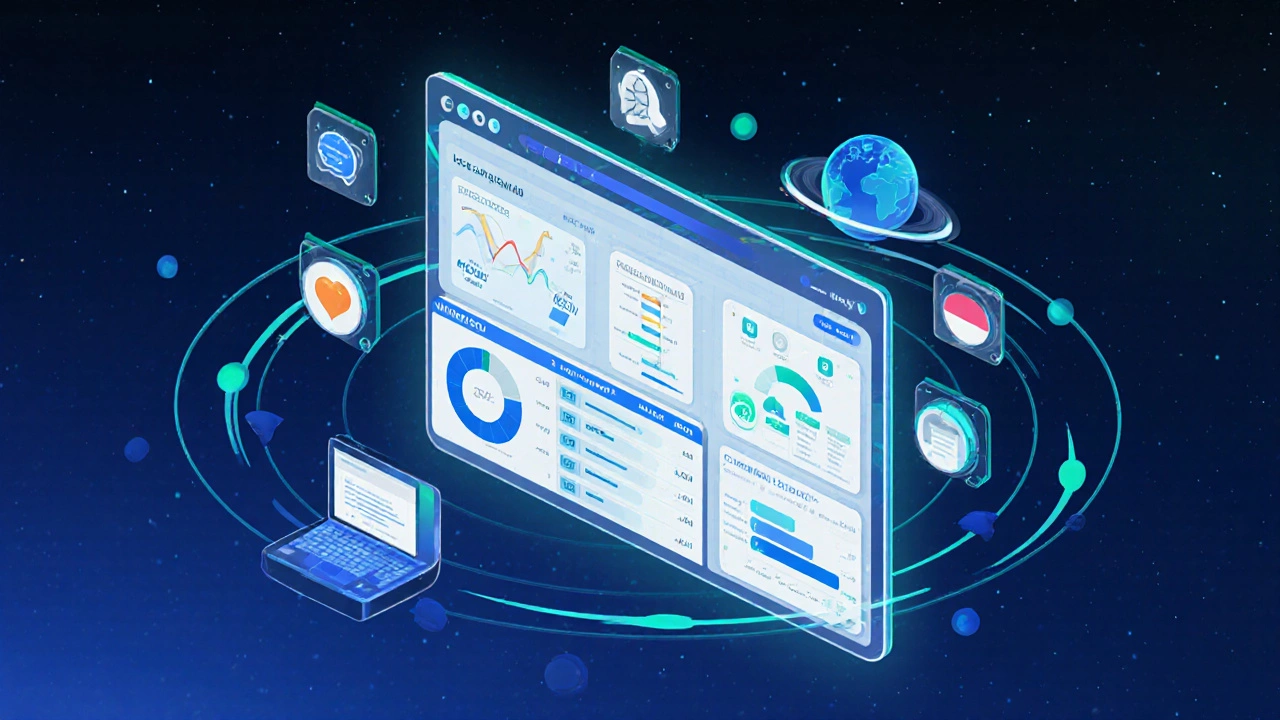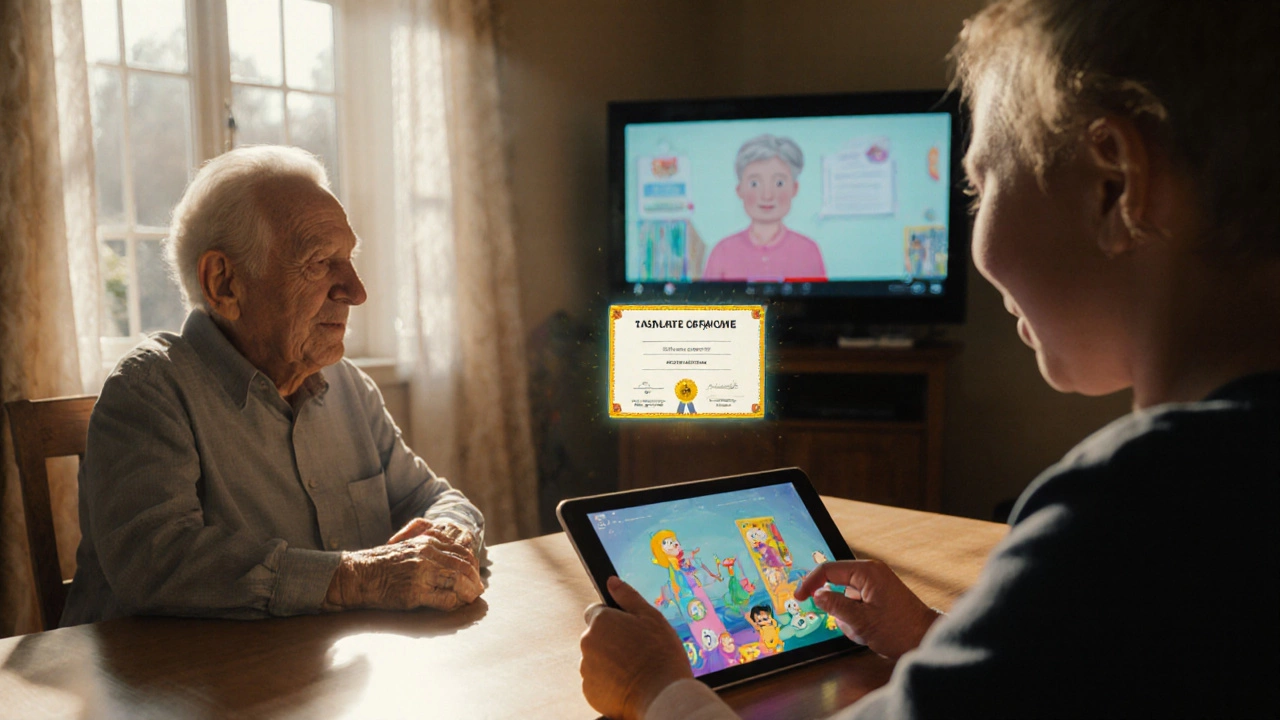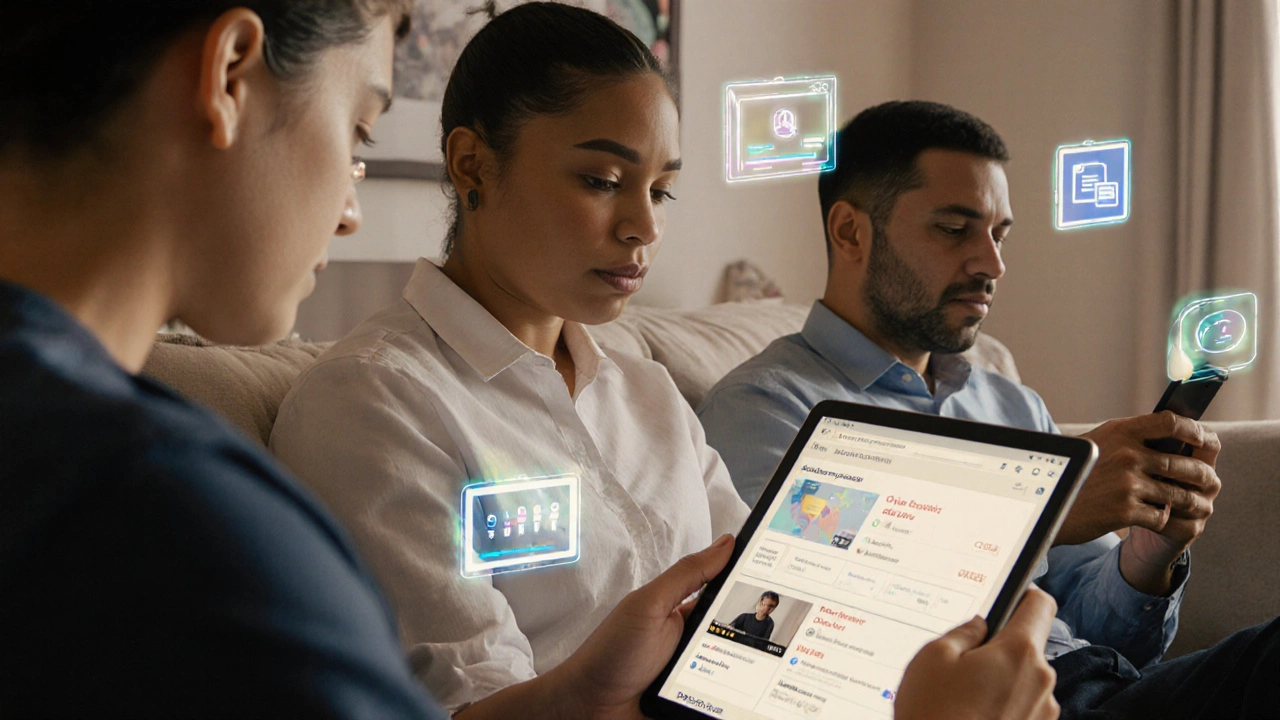Digital Learning Platform Recommender
Find the perfect digital learning platform for your goals. Just answer a few simple questions, and we'll recommend the best options based on your needs.
What are your learning goals?
Your Recommendations
Think about the last time you learned something new. Maybe you watched a video on how to fix a leaky faucet, took a free course on budgeting, or practiced Spanish with an app during your commute. That’s digital learning in action. Digital learning platforms are the backbone of modern education - they’re not just websites with videos. They’re full ecosystems that deliver lessons, track progress, connect learners, and even grade assignments - all online.
What Exactly Is a Digital Learning Platform?
A digital learning platform is a software system that lets people teach and learn without being in the same room. It’s not just YouTube or a PDF download. These platforms give structure to learning. They have courses, quizzes, discussion boards, progress dashboards, and sometimes live video sessions. You can access them from your phone, tablet, or computer - anytime, anywhere.
Think of it like a digital classroom. Instead of a teacher standing at a whiteboard, you get video lectures, interactive exercises, automated feedback, and peer discussions. Schools, companies, and governments use these tools to train people. You’ve probably used one without realizing it - if you’ve ever done an online course on Coursera, watched a lesson on Khan Academy, or completed a training module at work, you’ve used a digital learning platform.
How Do They Work?
These platforms run on something called a Learning Management System, or LMS. The LMS is the engine behind the scenes. It stores your course materials, tracks how far you’ve gone, sends reminders when you’re falling behind, and gives your instructor data on how the class is doing.
Here’s how it usually works:
- You sign up for a course - maybe it’s ‘Introduction to Data Science’ or ‘Effective Communication for Managers’.
- You get access to lessons: videos, readings, slides, or podcasts.
- You complete assignments or quizzes - sometimes auto-graded, sometimes reviewed by a human.
- You join a discussion forum to ask questions or debate ideas with other learners.
- You earn badges, certificates, or progress points as you finish sections.
Some platforms even use AI to suggest what you should learn next based on what you’ve already done. If you struggled with algebra problems, the system might recommend extra practice or a simpler intro video. It’s like having a personal tutor who never sleeps.
Who Uses These Platforms?
Digital learning platforms aren’t just for students. They’re used by everyone:
- Students - from high schoolers taking AP classes online to university learners supplementing their degrees.
- Professionals - people upgrading skills for promotions, switching careers, or learning new tools like Excel, Python, or project management software.
- Companies - training employees on safety rules, customer service, or new software without pulling them off the job.
- Adult learners - parents, retirees, or caregivers who can’t attend traditional classes but still want to grow.
In Australia, over 60% of adults have taken an online course in the last two years, according to the Department of Education. That’s not just students - it’s nurses learning new procedures, plumbers studying green energy standards, and teachers mastering digital tools for their classrooms.

Types of Digital Learning Platforms
Not all platforms are the same. Here are the main kinds you’ll find:
- MOOC Platforms - like Coursera, edX, and FutureLearn. These offer free or paid university-level courses from top schools. You can earn certificates that look good on LinkedIn.
- Corporate LMS - platforms like LinkedIn Learning, TalentLMS, or Docebo. Used by companies to train staff. Often locked behind a company login.
- K-12 Learning Hubs - Think Google Classroom, Seesaw, or Khan Academy Kids. Designed for schools and younger learners with simpler interfaces and parental controls.
- Specialized Skill Platforms - Udemy, Skillshare, Pluralsight. Focused on practical skills: graphic design, coding, photography, cooking. You buy individual courses, not subscriptions.
- Language Apps - Duolingo, Babbel, Memrise. These use gamification to make learning vocabulary and grammar feel like a game.
Each type serves a different need. If you’re looking to get a certification for your resume, go for a MOOC. If you just want to learn Photoshop for fun, Udemy has affordable courses. If you’re a teacher, Google Classroom is built for your classroom.
Benefits of Using Digital Learning Platforms
Why do so many people switch from traditional classes to digital ones?
- Flexibility - Learn at your own pace. Pause, rewind, rewatch. No need to rush through a lesson because the class moved on.
- Accessibility - If you live in a remote town, have a disability, or work night shifts, you can still learn. All you need is internet.
- Cost-Effective - Many platforms offer free courses. Even paid ones are often cheaper than in-person classes or textbooks.
- Personalization - AI-driven platforms adapt to your learning style. Some people learn better with videos. Others prefer reading. Good platforms give you options.
- Tracking Progress - You can see exactly where you stand. No guessing if you’re keeping up. Dashboards show completed modules, quiz scores, and time spent.
One mother in Perth told me she learned basic accounting through a free course on Coursera while her kids were at school. Six months later, she got a part-time bookkeeping job. That’s the power of digital learning - it doesn’t wait for you to have the perfect time. It meets you where you are.
Common Challenges and How to Overcome Them
It’s not all smooth sailing. People often quit online courses because they feel lost or unmotivated. Here’s what goes wrong - and how to fix it:
- Too many choices - With thousands of courses, it’s easy to get overwhelmed. Fix: Pick one course. Stick with it. Finish it before starting another.
- No accountability - No teacher checking on you. Fix: Tell a friend your goal. Join a study group. Set weekly reminders.
- Bad tech experience - Slow videos, confusing menus, broken links. Fix: Use a reliable device and internet. Try different browsers. Check platform reviews before signing up.
- Feeling isolated - Learning alone can be lonely. Fix: Participate in forums. Comment on others’ posts. Look for platforms with live Q&A sessions.
The biggest mistake? Starting without a goal. Don’t just ‘learn something’. Ask: What do I want to be able to do after this course? Then pick the platform and course that directly helps you get there.

What to Look for When Choosing a Platform
Not all platforms are created equal. Here’s what to check before signing up:
- Credibility - Is the course offered by a university, known company, or respected instructor? Check reviews and instructor credentials.
- Content quality - Are videos clear? Is the material updated? Outdated tech tutorials are useless.
- Support - Is there a help center? Can you ask questions? Are there community forums?
- Certification - Does it give you a certificate? Is it recognized by employers or institutions?
- Cost - Is it free? Is there a trial? Are there hidden fees?
For example, if you’re learning to code, don’t just pick the cheapest option. Look for platforms that offer real projects - like building a website or app - not just theory. Employers care more about what you’ve built than what you’ve watched.
Future of Digital Learning
The next few years will bring big changes. Virtual reality classrooms are already being tested in universities. AI tutors are becoming smarter at explaining hard concepts in simple ways. Platforms are starting to recognize skills you’ve learned - even if you didn’t take a formal course - by analyzing your work on GitHub, Behance, or other public portfolios.
In Australia, the government is pushing for more digital upskilling in regional areas. By 2027, every public library will offer free access to learning platforms. That means no more excuses - if you want to learn, the tools are there.
Digital learning isn’t replacing schools or universities. It’s expanding them. It’s giving people who were left out of traditional education a second chance. Whether you’re 16 or 60, you can start learning something new today - and you don’t need to wait for the next semester to begin.
Are digital learning platforms free?
Many platforms offer free courses - like Khan Academy, MIT OpenCourseWare, and YouTube tutorials. But if you want certificates, graded assignments, or access to exclusive content, you’ll usually pay. Some charge per course, others use subscriptions. Always check what’s included before signing up.
Do employers recognize certificates from digital platforms?
Yes - but it depends on the platform. Certificates from Coursera (partnered with Stanford, Yale, etc.), edX, or LinkedIn Learning are widely recognized. Employers value them because they show initiative and specific skills. A certificate from an unknown site with no accreditation may not carry weight. Always check who’s offering the course.
Can I use digital learning platforms on my phone?
Absolutely. Most platforms have mobile apps for iOS and Android. You can watch videos, take quizzes, and even submit assignments on your phone. Some apps even let you download lessons for offline use - great if you’re commuting or in areas with poor internet.
What’s the difference between a digital learning platform and an online course?
An online course is a single set of lessons - like ‘Learn Python in 10 Hours’. A digital learning platform is the entire system that hosts many courses, tracks your progress, connects you with others, and gives you tools to manage your learning. Think of it like a library vs. one book.
Are digital learning platforms good for kids?
Yes, if they’re designed for children. Platforms like Khan Academy Kids, ABCmouse, and Duolingo ABC use games, animations, and rewards to keep kids engaged. But young learners need adult guidance to stay focused and avoid distractions. Parental controls and scheduled learning times help a lot.
How do I stay motivated when learning online?
Set small goals - like ‘finish two lessons this week’. Track your progress visually. Join a study group or find a learning buddy. Reward yourself after completing a module. Most importantly, connect your learning to something real - a job goal, a personal project, or a skill you’ve always wanted.
Next Steps: Where to Start
If you’re ready to try a digital learning platform, start simple:
- Decide what you want to learn - even one clear goal helps.
- Search for platforms that offer that topic - read reviews and check if the course is updated.
- Start with a free course to test the platform’s style.
- Set a weekly time slot - even 30 minutes - and stick to it.
- Finish one course before starting another.
You don’t need to be tech-savvy. You don’t need to be young. You just need to start. The world of learning is no longer locked behind classroom doors. It’s in your pocket, waiting for you to click play.
